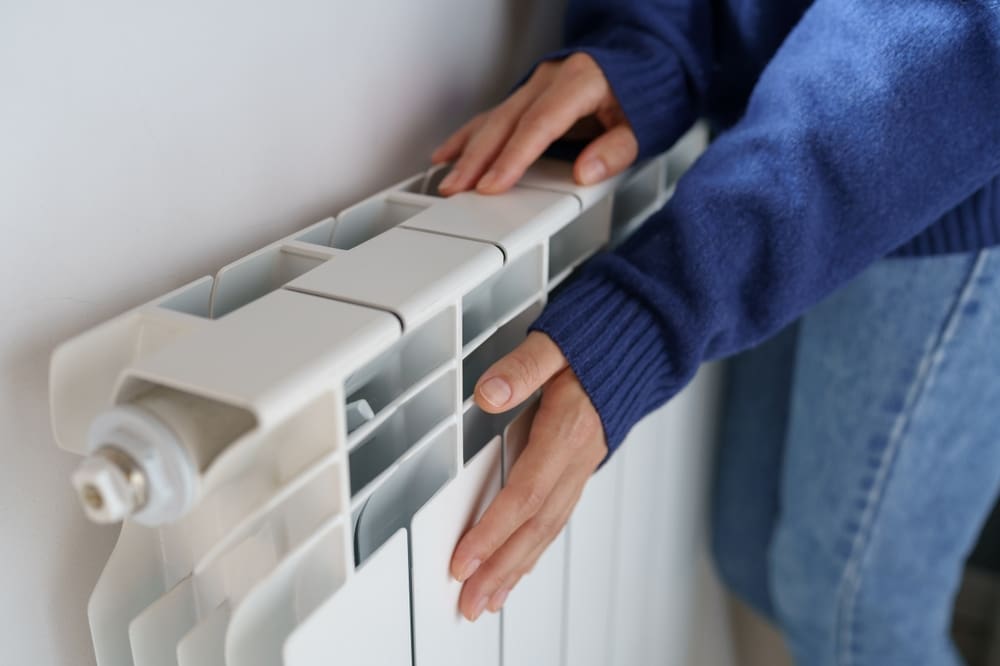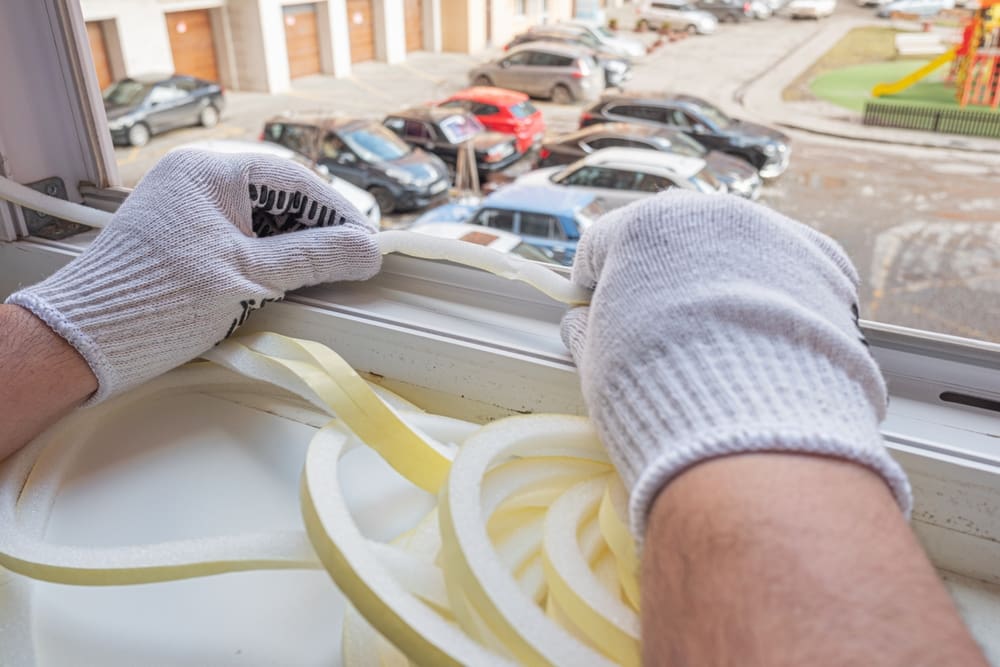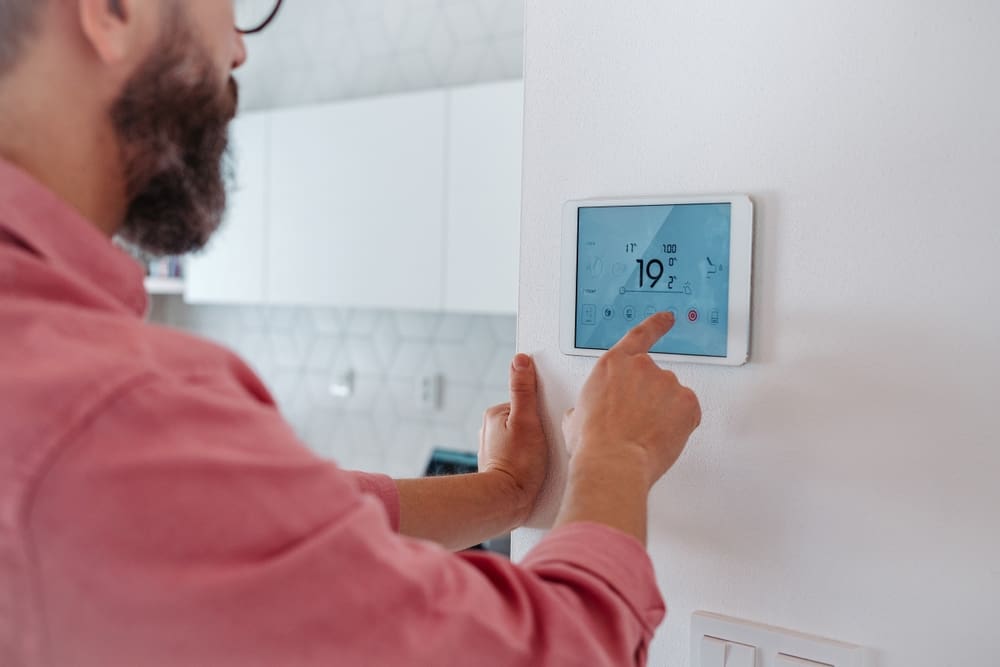
Staying warm in the winter requires more than a flip of the thermostat switch. In fact, there are many other practical ways to keep your house warm in the winter that don’t cost a dime.
The following guide is a compilation of strategies you can use to remain comfortable indoors when outdoor temperatures drop. We’ll explain how your home loses heat and provide you with short- and long-term solutions to prevent heat loss and optimize insulation. We will also highlight the importance of furnace maintenance and the role HVAC professionals play in keeping your home comfortable during those chilly desert nights.
We’re just warming up. Let’s get started.
Why Your Home Might Be Losing Heat
When heat escapes from your living space, it forces your furnace to work overtime, driving up energy bills and potentially shortening the lifespan of your HVAC system. Over time, unaddressed heat loss leads to premature and costly furnace repairs.
Below are some of the most common culprits of heat loss in your home.
1) Basement Walls and Floors
Your home’s foundation is often its weakest link when it comes to heat retention. Approximately 20% of home heat is lost through basement walls, primarily due to poorly insulated cement slabs and foundation walls. If you have an unfinished basement, warmth can easily slip away through unprotected surfaces.
The solution? Consider finishing your basement or adding targeted insulation. Techniques like installing blanket batts, foam boards, reflective foils, or fiber insulation can significantly improve your home’s R-value—the measure of thermal resistance. A higher R-value means less heat loss, a warmer home, and lower energy costs.
2) Cracks in Walls, Windows, and Doors
Seemingly insignificant gaps in these surfaces can turn out to be major heat loss contributors. Surprisingly, 38% of home heat loss occurs through minor cracks in walls, windows, and doors. To put this into perspective, a tiny ⅛ inch gap under a standard doorway can let in as much cold air as a 2.4-inch hole in your wall—that’s significant.
Don’t let heat slip through the cracks. Try this instead:
- Regularly caulk joints around window and door frames.
- Install weatherstripping on moving parts of doors and windows.
- Conduct annual inspections to identify and seal potential air leaks.

4) Poorly Insulated Windows
Poorly designed or installed windows are notorious for contributing to home heat loss. While completely replacing windows can be expensive, you have several cost-effective alternatives for improving their thermal performance:
- Install triple-glazed or storm windows to reduce heat loss by 10-20%.
- Apply plastic window insulation sheets, which can be easily installed with a hair dryer.
- When replacing windows, choose Energy Star-rated options for maximum efficiency.
5) Ceilings
While hot air naturally rises, this doesn’t mean your ceiling and attic are exempt from heat loss. Improperly sealed or insulated ceilings allow warmth to escape.
The U.S. Department of Energy recommends:
- Measuring your attic insulation thickness.
- Ensuring at least 11 inches of fiberglass or wool insulation.
- Adding insulation if current levels fall short.
- Insulating your attic access door to prevent additional heat transfer.
How To Keep Your Home Warmer
By understanding and addressing the common heat loss sources outlined above, you can create a more energy-efficient home, reduce heating costs, and extend the life of your heating system. However, we recognize that replacing windows and doors, finishing basements, and installing insulation can be a significant investment of your time and money.
If large upgrades aren’t affordable, here are some additional ways to keep your house warm in the winter, some of which we’ve kept low-cost and simple.
1) Seal Draft Sources
Combat heat loss by creating an airtight seal around drafty doors and windows. Utilize weatherstripping, door sweeps, window film, and silicone caulk to block cold air infiltration and maintain a comfortable indoor temperature.
2) Don’t Skip HVAC Maintenance
Even though it might be hidden away in a closet, treat your furnace like the high-performance machine it is. Regular maintenance—including changing filters, bleeding radiators, cleaning vents, adjusting dampers, inspecting ductwork, and lubricating moving parts—ensures optimal efficiency and prevents expensive breakdowns.
3) Be Strategic With Your Heat
Heat your home strategically by closing off unused rooms, implementing zone heating, occupying naturally warmer spaces, and keeping airflow unobstructed. By replacing a one-size-fits-all heating approach with one that’s more targeted, you can maximize comfort and minimize energy waste.
4) Adjust Your Furnace for Maximum Efficiency
Prevent your furnace from wasteful rapid cycling by fine-tuning your thermostat’s settings. Carefully adjust the cycle rate to maintain a stable temperature without excessive on-and-off switching, which can strain your heating system.
5) Use Sunshine To Your Advantage
Harness the free, natural heating power of sunlight by opening your curtains on sunny days. This simple strategy allows solar radiation to warm your living spaces, reducing the workload on your heating system.
6) Reverse Fan Rotation in Winter
Repurpose your ceiling fans to circulate heat by reversing their rotation to create an updraft. By pushing warm air downward, especially in homes with high ceilings, you can potentially lower your thermostat’s temperature settings without sacrificing room comfort.

7) Install a Programmable Smart Thermostat
Upgrade to a smart thermostat to precisely control your home’s heating schedule and energy consumption. These intelligent devices can learn your habits, automatically optimize temperature settings, and potentially save you significant money on long-term heating costs.
8) Switch From a Traditional Furnace to a Heat Pump
Embrace modern heating technology by considering a heat pump, which transfers heat instead of generating it from scratch. Heat pumps offer superior energy efficiency, particularly in moderate climates. Continually improving technology is making them viable in colder regions as well.
9) Close Your Curtains at Night
Create an insulating barrier at night by closing the curtains before you go to sleep. This helps trap accumulated warmth and provides an additional layer of protection against heat loss through windows.
10) Install Radiant Floor Heating
For those undertaking a home remodel, consider radiant floor heating as a luxurious and efficient heating solution. This system provides consistent warmth without the temperature fluctuations associated with traditional heating methods.
11) Know When It’s Time To Call an HVAC Professional
Recognize the limits of DIY maintenance and understand when professional HVAC expertise is necessary. Unusual system behaviors, uneven heating, frequent cycling, and unexplained energy bill increases are clear signals that it’s time to consult a licensed heating repair technician.
Long-Term Strategies for Sustainable Heating
While quick fixes provide instant gratification, long-term heating strategies offer more sustainable benefits.
Professional Energy Audits
Professional home energy audits provide detailed energy consumption assessments, often free of charge or at a discounted rate. Trained utility company technicians employ advanced diagnostic tools to uncover energy inefficiencies, identifying air leaks, insulation gaps, and concealed energy waste.
During a typical home energy audit, technicians will:
- Conduct comprehensive safety and efficiency tests on your appliances.
- Use specialized equipment to detect air infiltration points.
- Generate a detailed report with targeted energy-saving recommendations.
Renewable Energy Technologies
Transform your home’s heating approach by embracing renewable energy sources. While these systems require an upfront investment, they offer long-term benefits in both cost savings and environmental impact.
Renewable heating options include:
- Solar Panels: Generate clean electricity to power electric heating systems, reducing reliance on traditional grid power.
- Geothermal Heat Pump Systems: Leverage the earth’s consistent underground temperature to provide efficient heating and cooling.
- Biomass Heating Systems: Utilize renewable organic materials like wood pellets as a sustainable heating source.
- Wind Energy: Install small turbines in suitable locations to supplement your home’s energy needs.
Why Professional Assistance is Needed for Heating Troubles
Investing in professional heating system installation and maintenance creates a more comfortable, efficient, and environmentally responsible home heating strategy.
Key reasons to choose professional HVAC assistance include:
- Accurate problem diagnosis to ensure the job is done safely and effectively.
- Access to specialized tools and equipment.
- Rapid, efficient repairs.
- Preservation of manufacturer warranties.
- Preventative inspection through comprehensive system evaluations.
Call Us for Any HVAC Issues in Las Vegas
Choose BEST Air Conditioning Plumbing Repair for reliable, professional HVAC solutions. We know how to keep your house warm in the winter and cool in the summer. Book an HVAC repair service or tune-up and see for yourself the difference that comes with years of local expertise and unwavering commitment to customer satisfaction.
Fill out our convenient online scheduling form or give us a call at (702) 970-4911.

